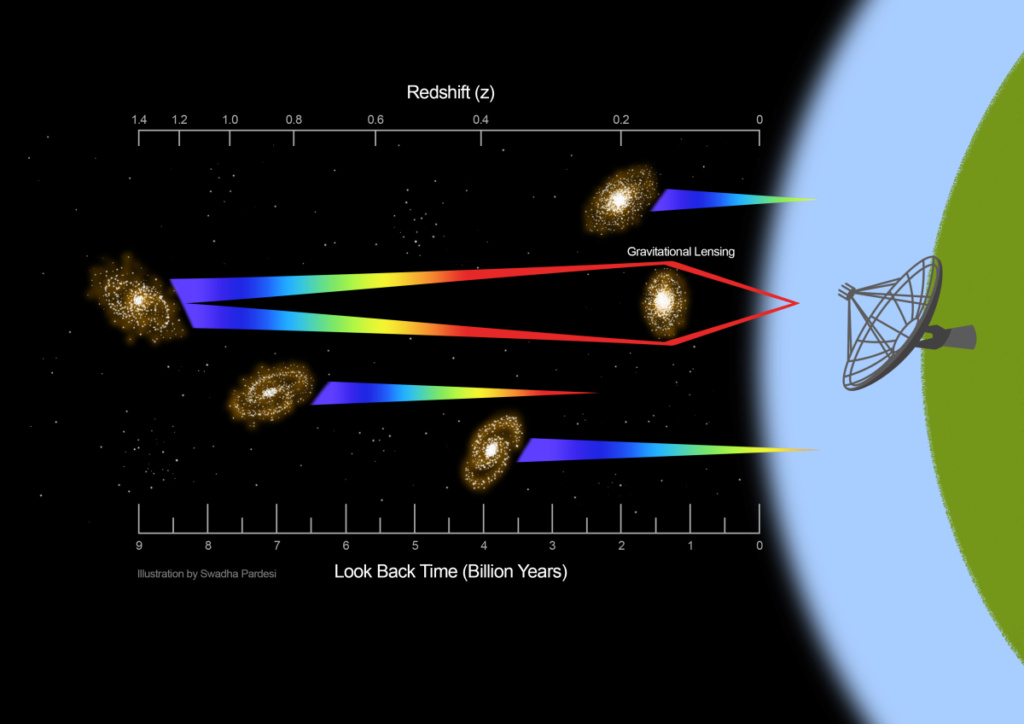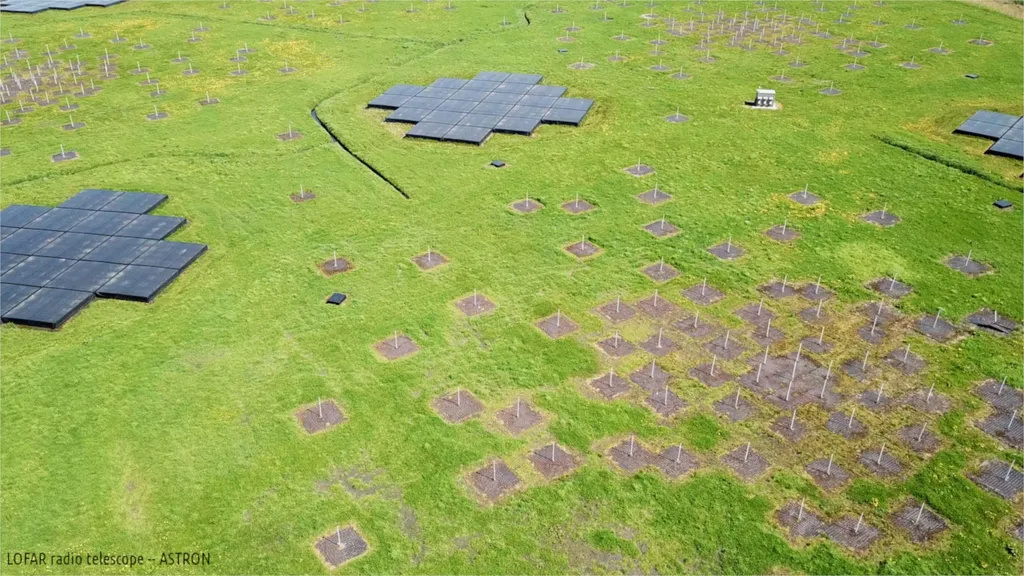Radio waves from another galaxy have been observed

This composite image shows the galaxy clusters Abell 0399 and Abell 0401. Both are permeated with high-temperature plasma that emits X-rays (red). Microwave data from the Planck space observatory show a hazy release of material connecting the two clusters (yellow) while data from the LOFAR radio telescope reveal the filament of radio emissions from the haze as well as pinpoint galaxies that form the heap.
For a long time, scientists have imagined that the structure of our universe resembles a huge web. One of its filaments has finally let itself be observed.
A billion light-years from Earth is currently unfolding an extraordinary spectacle: the slow collision of two clusters of galaxies . Observations of this phenomenon have for the first time made it possible to detect a filament of radio waves connecting these two clusters , like the thread of a galactic pearl necklace.
These radio emissions extend over 10 million light-years and draw one of the filaments of the "cosmic network", the structure according to which matter is distributed in the universe .
Although astronomers have already been able to observe the multitude of galaxies and clusters that make up the nodes of this cosmic network, it is the observation of the filaments that connect the galaxies that poses a problem. The new image showing a plasma stream between galaxy clusters Abell 0399 and Abell 0401 is the first of its kind.
"We had never observed radio emissions linking two clusters," said Federica Govoni of the National Institute of Astrophysics in Italy, author of the article published in the journal Science . This is now done and this discovery could help astronomers better understand the universe in its largest dimensions.
DARK FILAMENTS
According to current theories, the universe would be imprinted with a uniform watermark composed of immense empty spaces interspersed with nets of twisted galaxies and colossal galactic groupings located at the level of the intersections. Until now, astronomers had only been able to observe these cosmic nodes: clusters. These gigantic celestial bouquets sometimes bring together thousands of galaxies tied together by gravity.
Filled with hot gas, dense dark matter and blazing stars, galaxy clusters are observable across the electromagnetic spectrum, meaning astronomers can distinguish their features across visible, infrared, X-rays, Gamma rays, and radio waves. Moreover, observations made with the radio telescope had already made it possible to distinguish a halo of radio emissions in the center of certain clusters, including Abell 0399 and Abell 0401.

On the other hand, the space between these clusters, known as the intergalactic medium, is dark and very sparsely populated, which makes any observation particularly difficult when the distances involved are taken into account: the massive cluster of galaxies closest to our own Local Group of galaxies and its neighbor the Virgo cluster lies 65 million light-years away.
All these obstacles were not enough to prevent Govoni and his colleagues from recently taking an interest in the interval between Abell 0399 and Abell 0401. Earlier, the Planck space observatory had detected what appeared to be a filament of matter linking the two systems, an observation that immediately piqued the team's curiosity and led them to wonder if the magnetic fields extended beyond the clusters.
DOORS OPENNING
At present, these two clusters are only at the beginning of their fusion. Although they are destined to collide, 9.8 million light-years still separate them from this fateful moment when their union will give birth to an even more massive supercluster. But for now, the two lovebirds have better things to do, like disrupting intergalactic space with great bursts of shock waves, magnetic field lines and particles sent to roam the void between them.
These are the effects of these disturbances that were observed by Govoni and his team using the largest radio telescope in the world, the LOw -Frequency ARray , or LOFAR for short, made up of 50,000 interferometers spread over five European countries.

This aerial view shows one of the many antenna stations of the Low-Frequency Array Radio Telescope, or LOFAR.
LOFAR actually detected radio waves emitted by electrons traveling at near the speed of light. Called synchrotron radiation , these waves are produced when highly energetic electrons move through a magnetic field. These radio emissions are likely common across the cosmic web but they far exceed the detection limits of current telescopes, Govoni says.
"The signal detected in this study is up to a hundred times stronger than some theoretical predictions of synchrotron emissions," says astronomer Tracy Clarke of the United States Naval Research Laboratory. “This is probably due to its accentuation in this region between two clusters about to merge. »
The filament, which spans an incredible distance, now raises questions about how synchrotron radiation could have occurred over such a large area, given that scientists are unable to explain how electrons could be continuously accelerated to near the speed of light over such a long distance.
“New doors are therefore opening up to the exploration of phenomena such as the distribution of particles in the filaments, the strength of the magnetic field and potentially its origin, as well as the processes of acceleration or re-acceleration that come into play within filaments," concludes Clarke.
Source : websites

